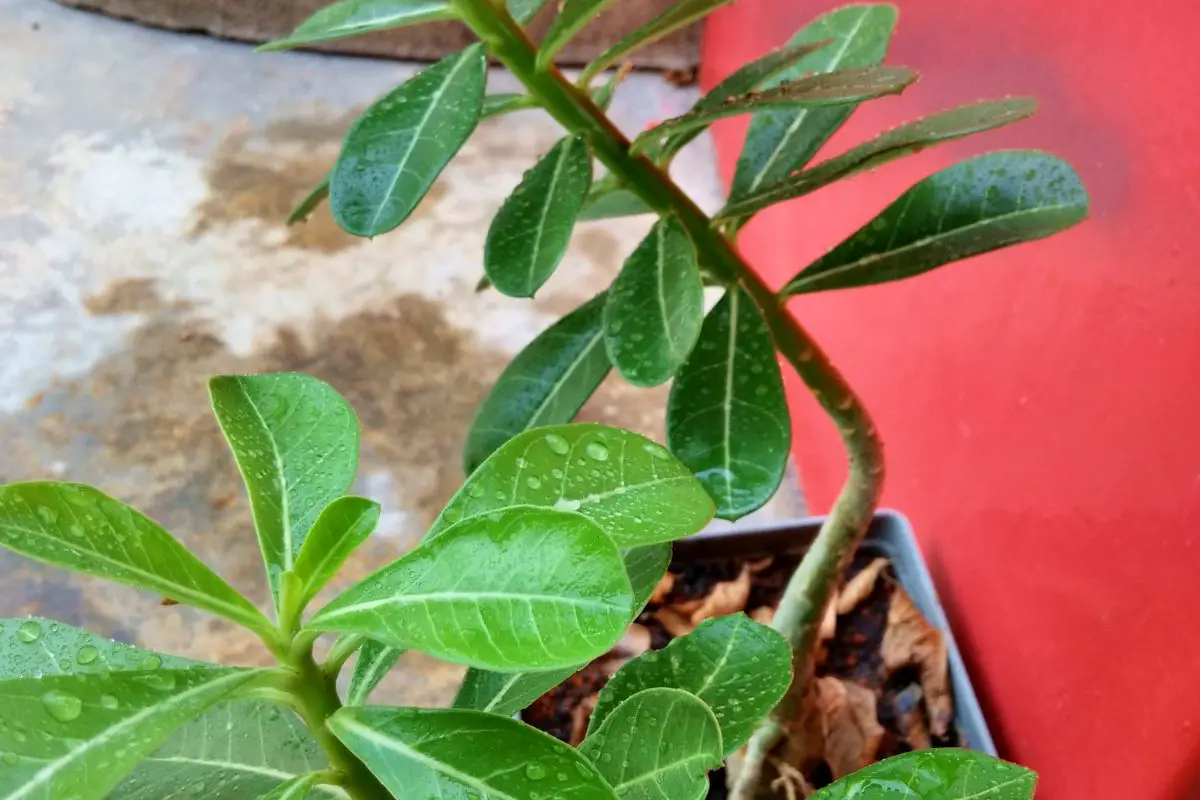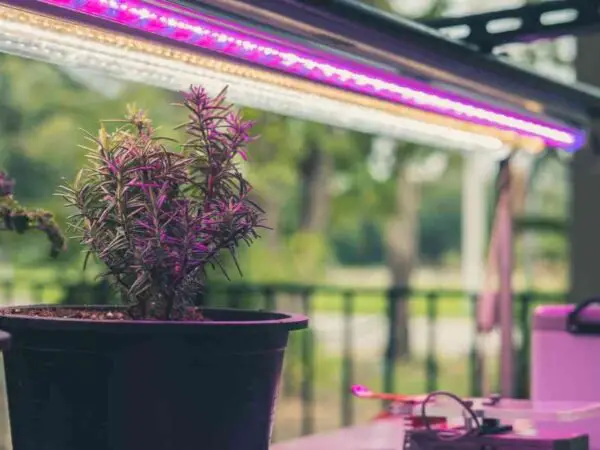Understanding the needs of your different indoor plants, including flowering houseplants and succulents, is crucial to their well-being. Water, sunlight, and houseplant fertilizers play a vital role in determining the health of your flowering houseplants. Refer to our plant care guide to meet your plant needs. Knowing when to water, fertilize, or adjust their light exposure can make a significant difference in their growth. Following a plant care guide is essential for those with a green thumb, as it helps meet the plant needs and choose the right houseplant fertilizers.
Houseplants can't tell you what they need directly, but they do send out signals through their leaves, stems, and overall appearance. Here's how to decipher those signals and determine what your plant might be lacking:
Water:
- Signs of underwatering: Leaves wilting, curling, or dropping; soil pulling away from the pot edges; dry, dusty soil.
- Signs of overwatering: Leaves turning yellow or brown and dropping; soft, mushy stems; waterlogged soil with a foul odor.
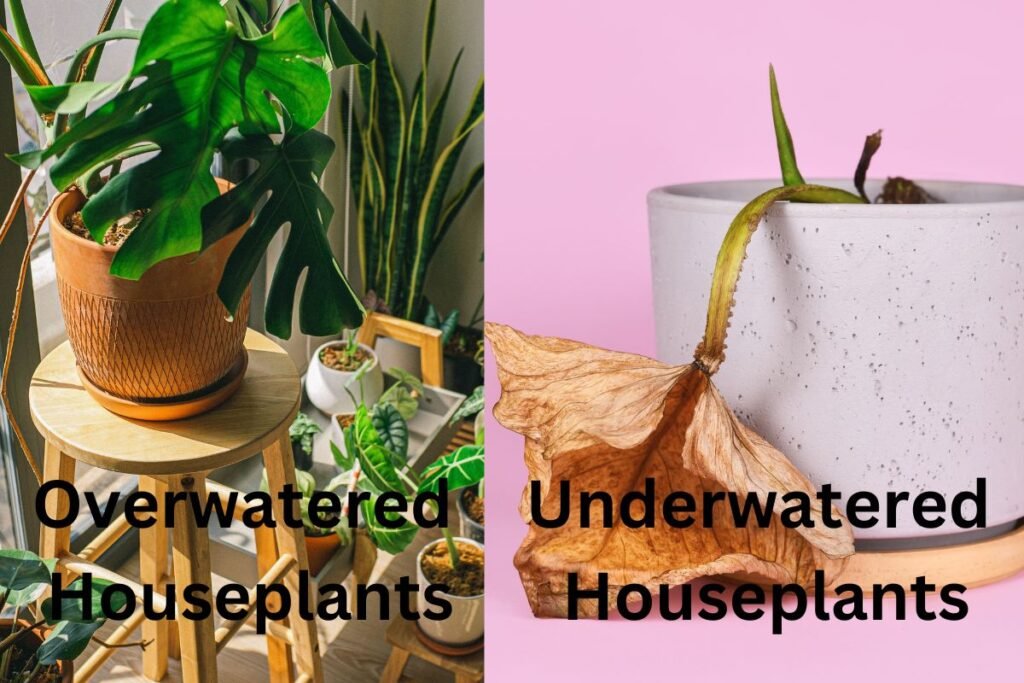
Fertilizer:
- Signs of under fertilization: Slow growth; pale leaves; lack of blooms; smaller-than-usual leaves.
- Signs of overfertilization: Leaf burn (brown or yellow spots on leaves); stunted growth; salt crust on the soil surface.
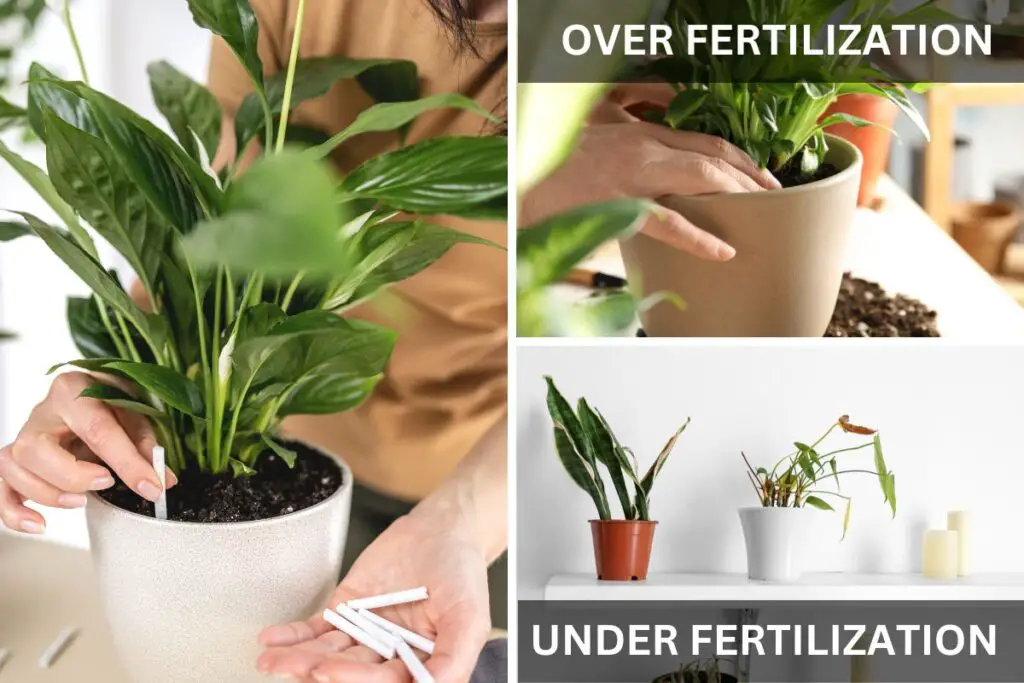
Sunlight:
- Signs of insufficient light: Leggy growth (tall and spindly with large gaps between leaves); pale leaves; drooping leaves; lack of blooms.
- Signs of too much light: Leaves turning yellow or brown, especially on edges; scorched leaves; wilting.
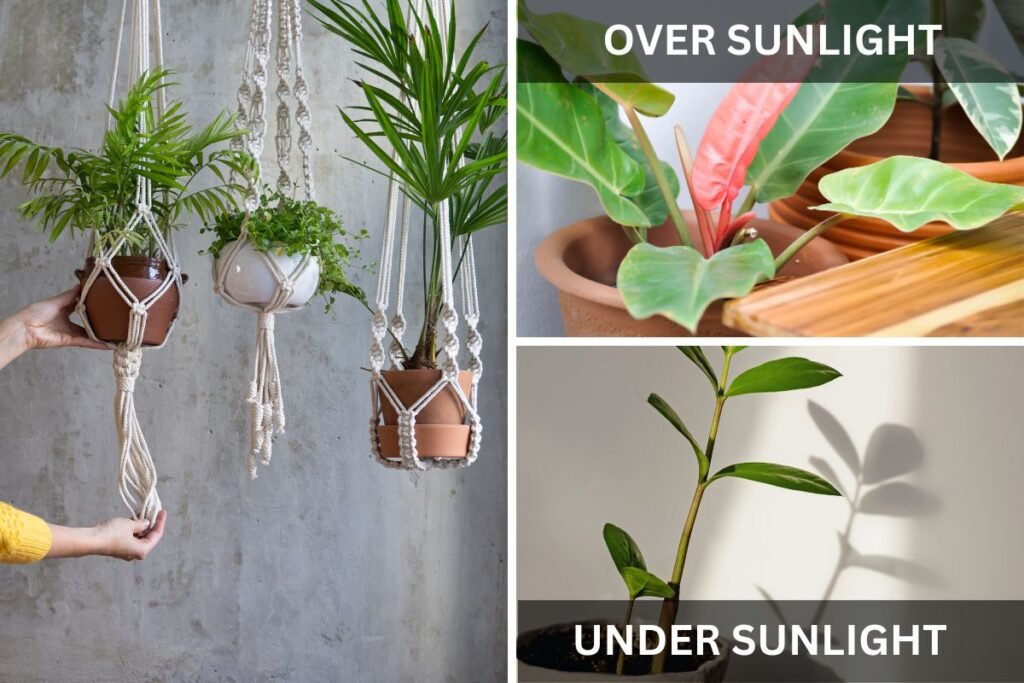
Shade:
- Signs of insufficient shade: Sunburn (yellow or white bleached patches on leaves); wilting; leaves curling inwards.
- Signs of too much shade: Slow growth; loss of variegation (for variegated plants); dropping leaves.
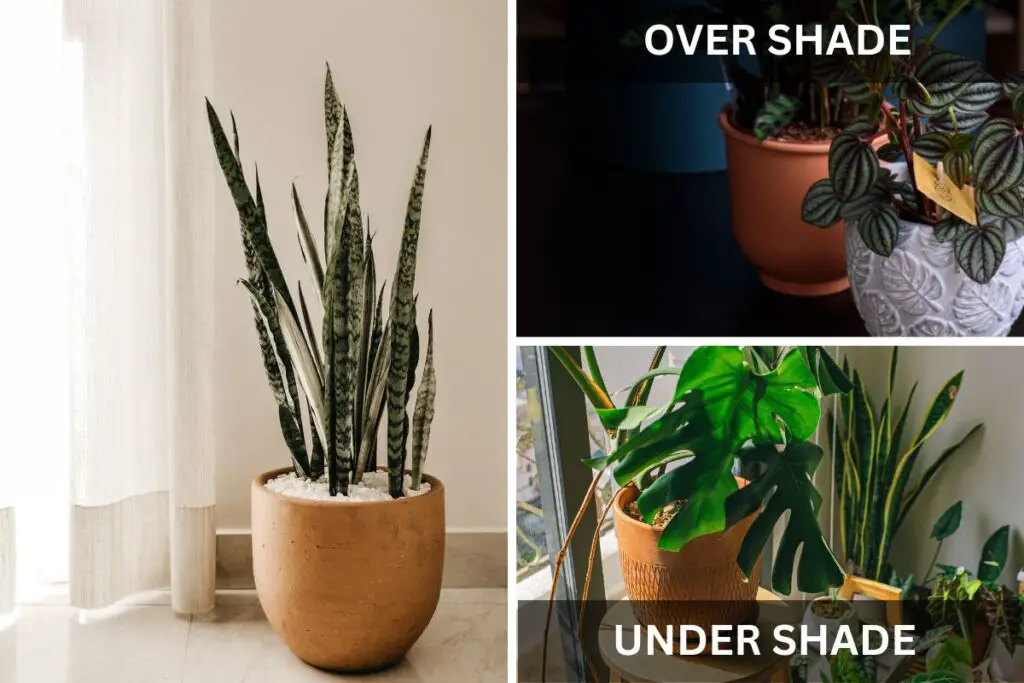
Recognizing Houseplant Needs
Watering Requirements
Houseplants often show signs of distress when they need more water or when exposed to excessive sunlight. Using a grow light can help maintain optimal soil moisture levels, preventing both minimal moisture and excessive sunlight issues. Common indicators of underwatering indoor plants include wilting, dry soil, and drooping leaves. It's important to follow a plant care guide and use houseplant fertilizers as indicated on the plant label to prevent these issues. Different plant types have varying watering needs; for instance, tropical plants generally require more frequent watering than succulents or cacti. When caring for houseplants, it's essential to consider their need for pots, grow light, much sunlight, and houseplant fertilizers. Proper drainage is crucial in houseplant care to prevent overwatering, which can lead to root rot and other issues. Using the right pots and houseplant fertilizers, along with a grow light, can help maintain healthy plant growth.
Fertilization Needs
Houseplants may need fertilizers to prevent nutrient deficiency, which can lead to yellowing leaves, stunted growth, or poor flowering. Ensure they receive much sunlight and are potted appropriately. Understanding the different types of fertilizers, grow light available is essential for meeting a plant's specific needs. Whether it's in pots or in the ground, foot much water is crucial for healthy growth. For example, flowering houseplants may benefit from a fertilizer high in phosphorus and grow light to promote blooming. Make sure they receive much sunlight, at least 6 hours per day, to help them grow foot. The frequency and timing of houseplant fertilizers vary among different plants and seasons, so it's important to follow guidelines tailored to each plant type. Houseplants need much sunlight to grow.
Light Preferences
Light and houseplant fertilizers play a vital role in the growth and development of indoor plants, as they need much sunlight. Insufficient light can result in leggy growth or pale leaves, while too much direct sunlight can cause leaf scorching. Houseplant fertilizer need is essential for healthy growth. Each houseplant has its own light requirements; some thrive in much sunlight, while others prefer low-light conditions. To grow, they need houseplant fertilizer. Understanding the preferences of your houseplants is crucial for placing them in suitable locations within your home, ensuring they grow well with enough sunlight. It's also important to use the right houseplant fertilizer to support their growth.
Shade Tolerance
Certain houseplants are better suited for low-light environments and can thrive without direct sunlight. Identifying these shade-tolerant plants is essential for maintaining their health and appearance, especially when considering the amount of sunlight and the use of houseplant fertilizer. Signs of stress due to lack of sunlight may include yellowing or dropping leaves. It's important to strike a balance by providing adequate light exposure without subjecting shade-tolerant plants to intense sunlight that could harm them.
Signs of Unhappy Houseplants
Visual Cues
Observing changes in leaf color, texture, and how much sunlight the houseplant receives can provide valuable insights into its well-being. If the leaves appear discolored, such as turning yellow or brown, it may indicate a nutrient deficiency, overwatering, or not receiving much sunlight. Noticing wilting or drooping in plants is often a sign of underwatering, while overly moist soil can lead to root rot, especially if the plants don't receive much sunlight. Paying attention to the overall appearance and vitality of the plant is crucial; lackluster foliage and stunted growth are indicators that the plant may require adjustments in care to receive much sunlight.
Growth Patterns
Recognizing healthy growth patterns in houseplants involves understanding how environmental factors like much sunlight impact their development. A lack of sunlight can stunt growth, causing leggy stems and pale leaves, while excessive sunlight might scorch the foliage. Monitoring the development of new leaves and stems is essential; slow or stunted growth could signify inadequate nutrients or much sunlight exposure.
Leaf Symptoms
Interpreting yellowing or browning leaves can reveal vital information about a houseplant's needs, such as the requirement for much sunlight. For instance, yellowing leaves may indicate overwatering or insufficient light, while brown spots could signal fungal infections or nutrient deficiencies. Identifying spots, streaks, or discoloration on leaves requires careful observation as these issues could stem from pests, diseases, or improper watering practices. Moreover, noting changes in leaf size or shape serves as an important indicator; for instance, smaller than usual leaves might suggest a lack of nutrients.
Understanding these signs enables you to cater to your houseplant's specific needs effectively.
Assessing Water Needs
Soil Moisture It's essential to check the soil moisture levels regularly by touching the soil with your fingers and visually inspecting it. Overwatering can lead to waterlogged soil, causing root rot, while underwatering can result in dry and compacted soil. Well-draining soil is crucial for maintaining proper moisture levels, allowing excess water to escape and preventing water stagnation.
Leaf Indicators Pay close attention to leaf wilting or curling as these are common indicators of a plant's water needs. Changes in leaf firmness, such as limp or crispy leaves, can also signal whether the plant requires more or less water. Observing any unusual growth patterns on leaves, like yellowing or browning, can provide insight into the plant's hydration status.
Plant Droopiness Recognizing signs of dehydration through drooping is crucial for understanding a plant's water requirements. It's important to differentiate between temporary droopiness caused by environmental factors like heat and chronic droopiness resulting from inadequate watering. Adjusting the frequency of watering based on the plant's droopiness can help maintain its optimal hydration levels.
Understanding Fertilizer Requirements
Nutrient Deficiency Signs Houseplants, like humans, require specific nutrients to thrive. Nitrogen deficiency may manifest as pale green or yellow leaves, while phosphorus deficiency can lead to dark green or purple-tinged leaves. Potassium deficiency often results in brown spots on the leaves or weak stems. Identifying these symptoms is crucial in determining the appropriate course of action for fertilizing houseplants.
Observing Stunted Growth or Abnormal Leaf Development Stunted growth and abnormal leaf development are common indicators of nutrient deficiencies in houseplants. For instance, nitrogen-deficient plants may exhibit slow growth and small, pale leaves. Phosphorus-deficient plants might display underdeveloped roots and a delay in flowering, while potassium deficiency could cause weak stems unable to support the plant's weight.
Addressing Nutrient Deficiencies Through Appropriate Fertilization Once nutrient deficiencies are identified, it's essential to address them through appropriate fertilization. Choosing a balanced fertilizer containing equal parts nitrogen (N), phosphorus (P), and potassium (K) can help rectify deficiencies effectively. Carefully following the recommended dosage on the fertilizer package is crucial to avoid over-fertilization, which can harm the plants.
Fertilization Frequency Determining the Optimal Schedule for Fertilizing Houseplants The frequency of fertilizing houseplants depends on various factors such as plant type, growth stage, and environmental conditions. Generally, during active growing seasons like spring and summer, houseplants benefit from regular fertilization every two to four weeks. However, during dormant periods like fall and winter when plants grow more slowly or enter a resting phase, reducing or ceasing fertilization is advisable.
Considering Seasonal Variations in Fertilization Needs Understanding seasonal variations is vital in meeting houseplant fertilization needs effectively. As daylight hours decrease during fall and winter months, many houseplants experience reduced metabolic activity and slower growth rates. Consequently, adjusting the fertilization frequency accordingly helps prevent nutrient buildup in soil that can potentially harm plant roots.
Avoiding Over-Fertilization and Its Consequences Over-fertilizing houseplants can have detrimental effects on their health. Excessive fertilizer application can lead to salt accumulation in the soil, causing root damage and inhibiting water absorption by plants. Moreover, it can also disrupt the balance of nutrients within the soil substrate, leading to adverse effects on overall plant health.
Evaluating Light Conditions
Light plays a crucial role in the growth and development of houseplants. Understanding how to assess light conditions can help determine if your houseplant needs more sunlight or shade.
Light Intensity
Different plant species have varying requirements for light intensity. Some plants thrive in bright, direct sunlight, while others prefer lower light levels. Assessing the specific brightness level needed by your plants is essential for their overall health and growth. For instance, flowering plants often require higher light intensity for robust blooming, while foliage plants may flourish under moderate to low light conditions. Observing the plant's response to its current light exposure can provide valuable insights into whether it needs more sunlight or should be moved to a shadier spot.
Understanding the impact of light intensity on photosynthesis is also crucial. Photosynthesis is the process through which plants convert light energy into chemical energy, enabling them to produce food. Inadequate light intensity can hinder this process, leading to stunted growth and pale leaves. On the other hand, excessive light intensity can cause sunburn and damage to the plant's delicate tissues. By closely monitoring how your houseplant responds to its current lighting conditions, you can make informed decisions about adjusting its exposure to meet its specific needs.
Light Duration
Monitoring the duration of daily light exposure for your houseplants is equally important. While some plants require longer hours of sunlight each day, others may thrive with shorter periods of direct or indirect light. Recognizing signs of inadequate or excessive light duration is essential for maintaining optimal plant health. Symptoms such as leggy growth, yellowing leaves, or leaf scorching can indicate that a plant is not receiving an appropriate amount of daily light.
Adapting the duration of light exposure based on your plant's behavior is key to ensuring its well-being. For example, if you notice that a particular plant is reaching towards a nearby window or leaning excessively towards a single direction, it may be signaling that it needs more balanced or extended access to natural light. Conversely, if you observe signs of stress such as wilting or browning foliage despite adequate watering and care, it might be an indication that the plant requires less intense or shorter periods of direct sunlight.
Identifying Sunlight Issues
Excessive Sunlight Signs
Noticing sunburn or bleaching on leaves due to excessive sunlight is a clear indicator that your houseplant is getting too much sun. The leaves may develop brown spots or patches, and the overall color might appear faded. Understanding the risk of heat stress from prolonged exposure to intense sunlight is crucial. This stress can lead to wilting, dried-out soil, and a generally parched appearance in your plant. To address this issue, providing shade or adjusting the placement of your plant can help protect it from excessive sunlight. Consider moving it to an area with indirect light or using sheer curtains to filter the intensity of the sun.
Insufficient Light Symptoms
Identifying leggy growth as a sign of insufficient light is essential for recognizing when your houseplant needs more exposure to sunlight. Leggy growth refers to long, stretched-out stems with noticeable gaps between leaves. This occurs when plants are reaching for light that they aren't receiving in adequate amounts. Noticing pale or yellowish foliage due to lack of light exposure signals that your plant requires more sunlight. To remedy this situation, seek suitable locations with better lighting conditions within your home, such as near south-facing windows where plants can receive bright, indirect light throughout the day.
Optimizing Light Exposure
In optimizing light exposure for your houseplants, it's essential to address both low-light and intense sunlight issues to ensure they thrive.
Remedies for Low Light
When dealing with low-light areas, consider exploring options such as grow lights. These artificial lighting sources can provide the necessary light spectrum for plant growth in spaces with limited natural light. Choosing shade-tolerant plants is a practical approach to ensuring that your indoor greenery flourishes even in areas with minimal sunlight. Making adjustments to enhance natural light availability by strategically placing mirrors or reflective surfaces can also help redirect and amplify the existing light within a room.
Adjusting for Intense Sunlight
To mitigate the effects of intense sunlight on your houseplants, using sheer curtains or blinds can effectively filter excessive brightness indoors. This helps to create a more diffused and gentle lighting environment suitable for delicate plants. Furthermore, relocating plants away from direct sun during peak hours of intense sunlight can shield them from potential damage caused by overexposure. For outdoor plants, providing temporary shade using umbrellas or screens offers protective relief from prolonged periods of harsh sunlight.
Best Watering Practices
To ensure your houseplant thrives, it's crucial to understand the signs indicating whether it needs more water, fertilizer, sunlight, or shade. Here are the best practices for watering your houseplants effectively.
Watering Techniques
Watering techniques play a pivotal role in maintaining the health of your houseplants. One effective method is bottom watering, where you place the plant’s pot in a tray of water and let it soak up moisture through the drainage holes. This prevents over-watering and allows the plant to absorb just the right amount of water needed for healthy growth. Using room temperature water can prevent shocking the roots and help maintain an optimal environment for your plants.
Avoiding Over-Watering
Over-watering is one of the most common mistakes made in plant care. It leads to root rot and other detrimental effects on plant health. To avoid over-watering, always check the moisture level of the soil before watering again. You can do this by inserting your finger into the soil up to about an inch deep. If it feels dry at that depth, it's time to water; if not, hold off for a few more days. Moreover, choosing pots with drainage holes allows excess water to escape, preventing waterlogged soil that could harm your plant.
Selecting the Right Fertilizer
Fertilizer Types
There are various types of fertilizers available, each serving a specific purpose. When choosing a fertilizer for your houseplant, consider the three primary nutrients: nitrogen (N), phosphorus (P), and potassium (K). Look for a balanced fertilizer with roughly equal proportions of these nutrients, such as 10-10-10 or 20-20-20. These ratios ensure that your plant receives essential nourishment for healthy growth.
Application Tips
When applying fertilizer to your houseplant, it's crucial to follow the instructions on the packaging. Over-fertilizing can harm your plant, so it's best to start with a diluted solution and gradually increase the strength if necessary. Consider using a slow-release fertilizer for convenience, as it provides a steady supply of nutrients over an extended period.
Conclusion
You've learned to read the silent language of your leafy companions, understanding their subtle cues for water, light, and nutrients. By recognizing the signs of distress and gauging their specific needs, you can now provide tailored care to keep them thriving. Remember, it's like finding the perfect balance in a dance – too much or too little of anything can throw off the rhythm. So, observe, adjust, and nurture your green friends with the right watering techniques, suitable fertilizers, and optimal light exposure.
Now go on and put your newfound knowledge to work! Give your houseplants some extra love and watch them reward you with vibrant growth and beauty. And who knows, maybe you'll even inspire others to become plant whisperers too. Happy gardening!
Frequently Asked Questions
How can I tell if my houseplant needs more water?
If the top inch of the soil is dry to the touch, it's time to water. Wilting or yellowing leaves can also indicate dehydration. Always adjust watering based on your plant's specific needs and type.
What are the signs of unhappy houseplants?
Watch for drooping leaves, stunted growth, yellowing or browning of leaves, and moldy soil. These signs often indicate that your plant is not getting the right balance of water, sunlight, and nutrients.
How do I assess my houseplant's water needs?
Check the soil moisture by feeling it with your fingers. If it feels dry an inch below the surface, it's time to water. But be careful not to overwater as this can lead to root rot.
What are the best watering practices for houseplants?
Water thoroughly until you see water coming out from the drainage holes at the bottom of the pot. Then allow excess water to drain away completely. Avoid letting your plants sit in standing water.
How do I identify sunlight issues for my houseplant?
Monitor your plant for signs like pale leaves, weak stems, or leaning towards a light source. These could mean that your plant is not getting enough sunlight or is receiving too much direct light.
Image Source: Paid image from CANVA

